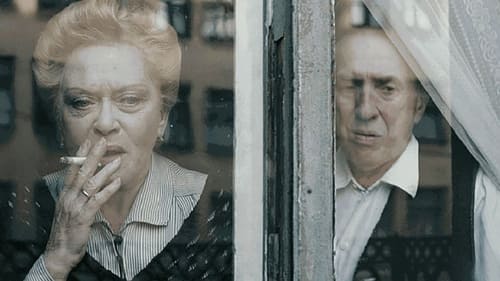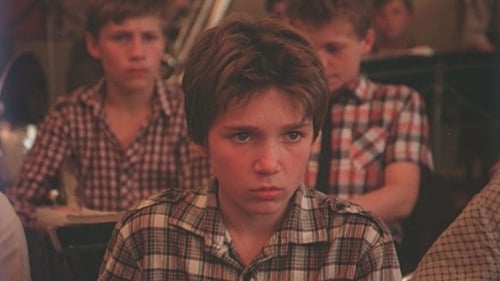Oleg Kovalov
출생 : 1950-09-20, Leningrad, Russian SFSR, USSR [now St. Petersburg, Russia]

A semi-fictional account of the life of Russian poet Joseph Brodsky, who was forced into American exile in 1972.

himself
Poetic portrait of a filmmaker. The famous director reflects on creativity and love. His friends and associates take part in the film: artist Vladimir Shinkarev, engineer Vladimir Nikolaev, actress Elena Kramer (Spiridonova), director, film critic Oleg Kovalov, necrorealist directors Yevgeny Yufit, Igor Bezrukov.

Anton Borisovich
In this movie we follow fate not a person but car: first Soviet Lada. It starts with Brezhnev daughter and then gradually moves on parallel to last years of USSR into wild after-perestroika years with bandits and newly born oligarchs.

Editor
Mixture of documentary and fiction about the dictatorial 1930s, loosely based on the utopian fantasies of Fritz Lang and about the forbidden passionate love affair between a photographer and his model.

Production Design
Mixture of documentary and fiction about the dictatorial 1930s, loosely based on the utopian fantasies of Fritz Lang and about the forbidden passionate love affair between a photographer and his model.

Writer
Mixture of documentary and fiction about the dictatorial 1930s, loosely based on the utopian fantasies of Fritz Lang and about the forbidden passionate love affair between a photographer and his model.

Director
Mixture of documentary and fiction about the dictatorial 1930s, loosely based on the utopian fantasies of Fritz Lang and about the forbidden passionate love affair between a photographer and his model.

Editor
Eisenstein shot 50 hours of footage on location in Mexico in 1931 and 32 for what would have become ¡Que viva México!, but was not able to finish the film. Following two wildly different reconstruction attempts in 1939 (Marie Seton's 'Time in the Sun') and 1979 (Grigori Alexandrov's '¡Que viva México!') Kovalov has here compiled another hypothetical version of what Eisenstein's film might have been.

Writer
Eisenstein shot 50 hours of footage on location in Mexico in 1931 and 32 for what would have become ¡Que viva México!, but was not able to finish the film. Following two wildly different reconstruction attempts in 1939 (Marie Seton's 'Time in the Sun') and 1979 (Grigori Alexandrov's '¡Que viva México!') Kovalov has here compiled another hypothetical version of what Eisenstein's film might have been.

Director
Eisenstein shot 50 hours of footage on location in Mexico in 1931 and 32 for what would have become ¡Que viva México!, but was not able to finish the film. Following two wildly different reconstruction attempts in 1939 (Marie Seton's 'Time in the Sun') and 1979 (Grigori Alexandrov's '¡Que viva México!') Kovalov has here compiled another hypothetical version of what Eisenstein's film might have been.

Director
A free film adaptation of the director's memoirs. In form, this is the "stream of consciousness" that attracted Sergei Eisenstein after getting acquainted with the experiments of James Joyce. The outer outline of the film is a long foreign trip of the director, which began in 1929, during which he recalls his past life and considers creative ideas. The film is constructed as a free alternation of reality, dreams, and fantasies. The material for it is fragments from the films of Sergei Eisenstein and his fellow contemporaries, documentary footage depicting the director and his time. The wide coverage of the faces and events reflected in the film shows the special role of Sergei Eisenstein in the culture of the twentieth century…

Screenplay
The rat lives in a cage that stands in the room of a large communal apartment in which the poet lives. The apartment is in the house; House - in the yard-well; The courtyard is in the city; And in the courtyard - 1939 ...In the film there are many newsreel frames of those times, the sound series contains both popular and propagandist songs, both Soviet and German. The plot is divided into many unrelated episodes, which are colorized in different colors. The author claims that everything shown should be understood outside of symbolism: everything in the film means only itself.

Director
The rat lives in a cage that stands in the room of a large communal apartment in which the poet lives. The apartment is in the house; House - in the yard-well; The courtyard is in the city; And in the courtyard - 1939 ...In the film there are many newsreel frames of those times, the sound series contains both popular and propagandist songs, both Soviet and German. The plot is divided into many unrelated episodes, which are colorized in different colors. The author claims that everything shown should be understood outside of symbolism: everything in the film means only itself.

Producer
The Island of the Dead is a film about the demise of the Russian Epocha Modern. The symbol of this culture was the legendary Russian film star Vera Kholodnaya, who evoked a poetic image of the young urban woman on the silver screen. Her death in 1919, shrouded in tragedy and mystery, put a symbolic end to the pre-Revolutionary period. The Island of the Dead is composed of fragments from numerous films from this period, juxtaposed with other contemporary artistic expressions such as music and painting. Kovalov shows convincingly how the fragile beauty of the Russian Epocha Modern had to make way for the pressure of Futurism, Constructivism and other 'progressive trends', and how these '-isms' were then also relegated to the melting pot to be remoulded by totalitarian norms.

Writer
The Island of the Dead is a film about the demise of the Russian Epocha Modern. The symbol of this culture was the legendary Russian film star Vera Kholodnaya, who evoked a poetic image of the young urban woman on the silver screen. Her death in 1919, shrouded in tragedy and mystery, put a symbolic end to the pre-Revolutionary period. The Island of the Dead is composed of fragments from numerous films from this period, juxtaposed with other contemporary artistic expressions such as music and painting. Kovalov shows convincingly how the fragile beauty of the Russian Epocha Modern had to make way for the pressure of Futurism, Constructivism and other 'progressive trends', and how these '-isms' were then also relegated to the melting pot to be remoulded by totalitarian norms.

Director
The Island of the Dead is a film about the demise of the Russian Epocha Modern. The symbol of this culture was the legendary Russian film star Vera Kholodnaya, who evoked a poetic image of the young urban woman on the silver screen. Her death in 1919, shrouded in tragedy and mystery, put a symbolic end to the pre-Revolutionary period. The Island of the Dead is composed of fragments from numerous films from this period, juxtaposed with other contemporary artistic expressions such as music and painting. Kovalov shows convincingly how the fragile beauty of the Russian Epocha Modern had to make way for the pressure of Futurism, Constructivism and other 'progressive trends', and how these '-isms' were then also relegated to the melting pot to be remoulded by totalitarian norms.

Director
A mixture of shots form a Soviet propaganda film and a documentary about the clinic for incurable alcoholics.

TV director Pavel Prishvin is filming with his friend-filmmaker, whose film talks about Stalinism

With a brother dedicated to punk rock stardom at any cost and a drunken father who chases skirt between robotic dancing lessons from the TV, young Senka stands as much chance of nurture as the hero of Truffaut's 400 Blows. The amazing thing about Ogorodnikov's film is that it was made in Russia. Clearly, plenty of Soviet teenies share the nihilistic feelings of their Western counterparts, and the extensive footage of safety-pin chic at concerts perhaps points to a sound export instinct on the director's part. Senka's brother Kostya is under pressure from Howmuch, a very heavy rocker, to steal a synthesiser from the Community Centre, so to protect him Senka steals it himself. The story occupies little more space than the music, but the performances are splendid enough to lodge Senka's predicament in the heart.

















